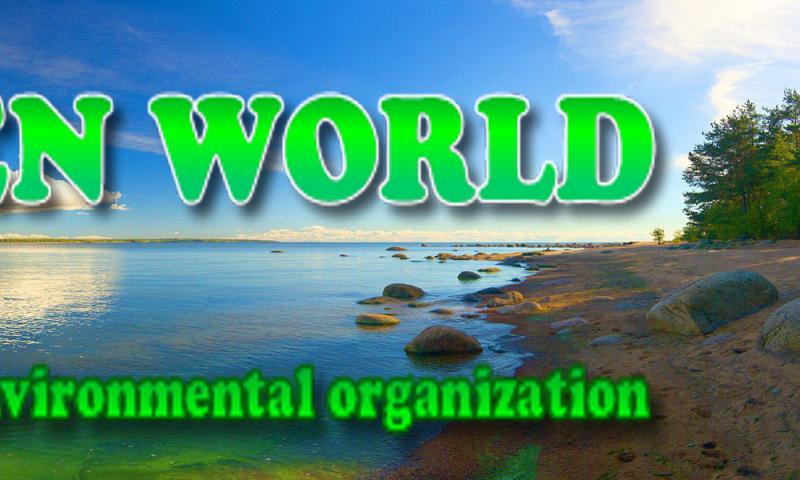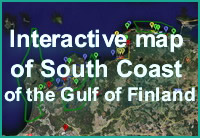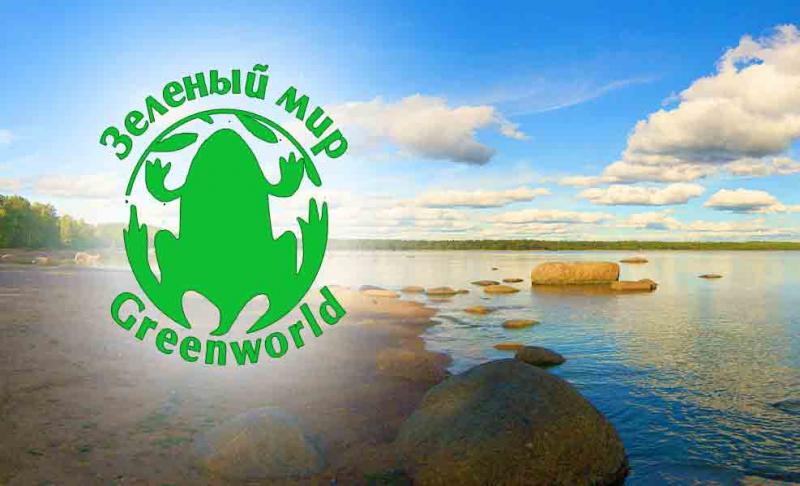
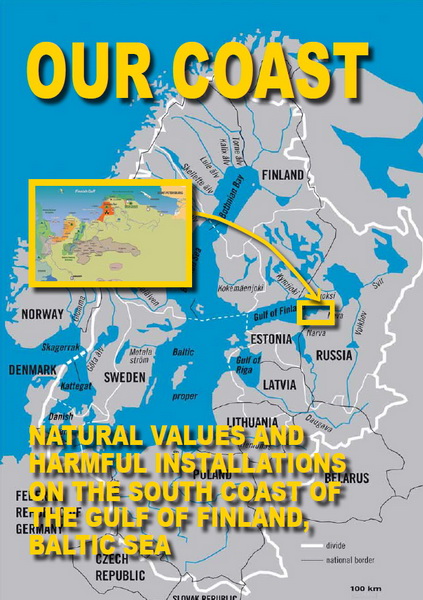 |
The South Coast of the Gulf of Finland |
|---|---|
| Natural Values and Harmful Installations |
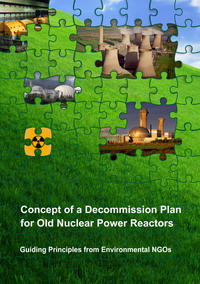 |
Concept of a decommission plan for old nuclear power reactors |
|---|---|
| Guiding Principles from Environmental NGOs |
Eurasian nuclear drain. St. Petersburg used as transport corridor for radioactive waste from east and west.
Baltic Newsletter # 103
EASTERN INFLUX.
Russian Port of Ust-Luga on the Gulf of Finland will transship radioactive and nuclear waste shipped to Russia via the Baltic Sea. A political decision about it was taken by the Government of Russia in 2003 (Decree № 1491-r of 14 October 2003). Its actual implementation is starting now.
Administration of Kingisepp District of Leningrad Oblast informed the GREEN  WORLD about public hearings in the township of Ust-Luga located close to the Russian-Estonian border. First results of the environmental impact assessment from the construction and operation of a temporary storage of radioactive materials were discussed at hearings. The storage facility is sited on the Luga Bay shore, next to the radioactive waste (RW) transshipment terminal in the developed Port of Ust-Luga.
WORLD about public hearings in the township of Ust-Luga located close to the Russian-Estonian border. First results of the environmental impact assessment from the construction and operation of a temporary storage of radioactive materials were discussed at hearings. The storage facility is sited on the Luga Bay shore, next to the radioactive waste (RW) transshipment terminal in the developed Port of Ust-Luga.
Some local inhabitants, Ust-Luga authorities and civil servants from Kingisepp District and Leningrad Oblast attended the public hearings.
The international RW transport scheme affecting the safety of whole Baltic Region was discussed with representatives of a small fishing village numbering a few thousand people. Lots of people in Russia and neighboring countries, whose safety depends on the impact from this project, have not been aware about the discussion and know nothing about the project itself.
Russia signed, but has not ratified Espoo «Convention on the environmental  impact assessment in the transboundary context» (of 25 February 1991). The Rosatom understands it as a possibility to stage ‘hearings’ in the convenient format, which was demonstrated by the event arranged in the restricted-admission border zone of Ust-Luga.
impact assessment in the transboundary context» (of 25 February 1991). The Rosatom understands it as a possibility to stage ‘hearings’ in the convenient format, which was demonstrated by the event arranged in the restricted-admission border zone of Ust-Luga.
If the radioactive project in Luga Bay is implemented, the thousand-ton flow of nuclear waste (depleted uranium hexafluoride), currently coming from Germany and France through the Kronstadt port of St. Petersburg, will be redirected to drain through this closed border zone farther away from the public protests. From Ust-Luga the hazardous cargo will anyway go to St. Petersburg to be transshipped and sent to the Russian East – Novouralsk, Angarsk and other inland cities.
The developed transport infrastructure of Luga Bay will have the capacities for additional influx of contaminated metal and its handling on the South coast of the Gulf of Finland.
The idea of importing metallic RW is promoted by the ECOMET-S company, a largest in Europe metallic RW melter, which has built on the territory of Leningrad NPP. The plant was put into operation in 2002, illegally, without the mandatory environmental examination (EIA). After modernization it will have the capacity to melt up to 10,000 t of radioactive metal annually.
The availability of Ust-Luga radioactive terminal 50 km west of ECOMET-S plant will be just perfect for the import of contaminated metal from all over the world. The radioactive byproducts resulting from the metal melting will by hosted by the RADON Plant (temporary RW storage) to settle down on the Baltic shore for undefined period.
The planned RW storage and sea terminal will neighbor “Kurgalsky Peninsula”, the wetland reserve of international value, which is protected by the Ramsaar Convention as the resting place of migrating birds. Luga Bay and rivers of its catchment area are the spawning place of commercial and ‘Red Book’ fish species, including Baltic salmon. Kurgalsky Peninsula is registered as the place with the richest biodiversity of Leningrad Oblast.
These natural values of European relevance will inevitably suffer from such neighborhood.
WESTERN INFLUX.
ECOMET-S has concluded a contract with Rosatom, in accordance with which by 2010s it will process all metal RW of Rosatom companies. It means that instead of processing metal waste from Leningrad NPP, for which ECOMET-S was originally commissioned, it will take radioactive metal from all Russia. In accordance with the governmental expert evaluation the country has accumulated about 600,000 t of it (Appendix 1 to the Decree of RF Government №1197-r of 1st September 1995), and the poisonous river of contaminated metal has started its drain to the Baltic Sea via St. Petersburg.
Rosatom is not the only customer of ECOMET-S – the plant continues to accept and melt metallic RW of the oil industry. These are radioactive sediments accumulated in pipes during oil transport and refining.
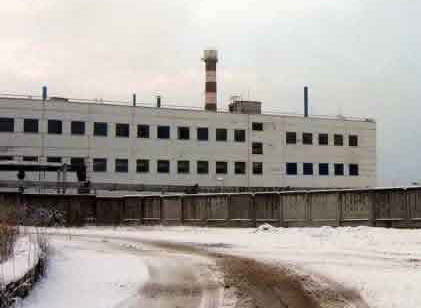 The information coming from Turkmenistan tells that ECOMET-S has an intention to melt metallic RW from this Central Asian country. Gurbanguli, President of Turkmenistan, has approved a $12.4 million contract: Concern ‘Turkmenhimia’ is contracting ECOMET-S “to dispose of the radioactive waste from chemical plant Hazar and Iodine plant Balkanabat”.
The information coming from Turkmenistan tells that ECOMET-S has an intention to melt metallic RW from this Central Asian country. Gurbanguli, President of Turkmenistan, has approved a $12.4 million contract: Concern ‘Turkmenhimia’ is contracting ECOMET-S “to dispose of the radioactive waste from chemical plant Hazar and Iodine plant Balkanabat”.
Russian legislation prohibits the import of radioactive waste. But ECOMET-S labels radioactive metal as ‘recyclables’ and … welcome to Russia!
Authorities of Sosnovy Bor and Leningrad Oblast support the dirty radioactive business, though first indications of its negative impact are evident – pine trees growing in the vicinity of ECOMET-S and in Sosnovy Bor have the incidence of genetic deviations, which is 2.8 times above the acceptable level. This signal of environmental hazard has been repeatedly confirmed by researches. The alarming materials have been published in Russian scientific periodicals and discussed at international conferences. We have to talk about pines, because statistics of Sosnovy Bor morbidity and inborn malformations are not published by mass media anymore.
The criminal story of ECOMET-S business development on the South coast of the Gulf of Finland continues for many years.
Public appeals to municipal, regional and federal authorities of Russia to arrange safe storage and processing of radioactive metal waste in the regions of their production are ignored. Civil complaints about it have been dismissed by the courts of justice of different levels without any consideration.
So it happens that authorities at power now and ECOMET-S make dirty money at the cost of safety and health of environment, the living and future generations.
St. Petersburg, the cultural capital of Russia, is transformed into the international drain for radioactive waste flowing in from East and West.
The radioactive drain collector on the Gulf of Finland keeps accumulating the waste from reprocessing and poses ever growing hazard for the whole Baltic Region.
OLEG BODROV, PHONE +7 921 74 52 631
You are welcome to transfer of our information.
When reprinting please refer to our periodical

